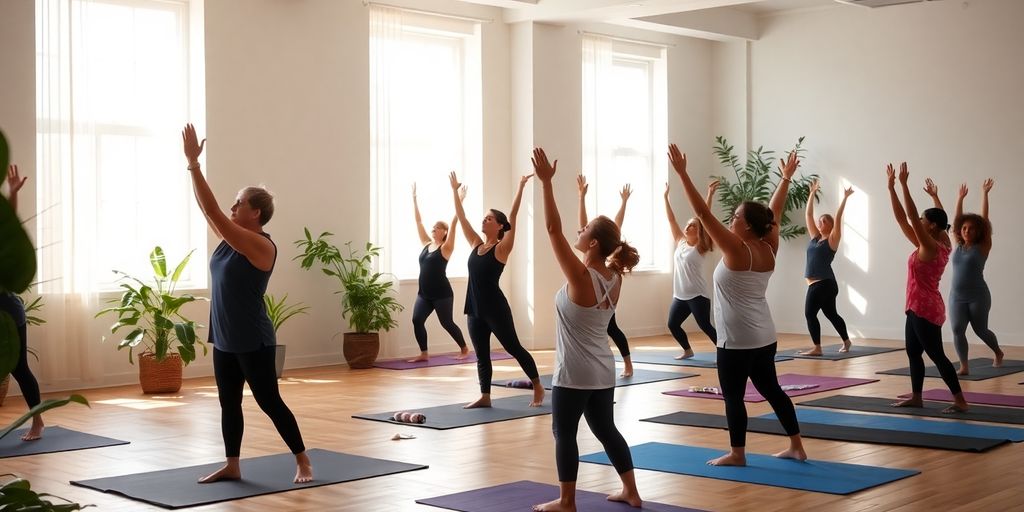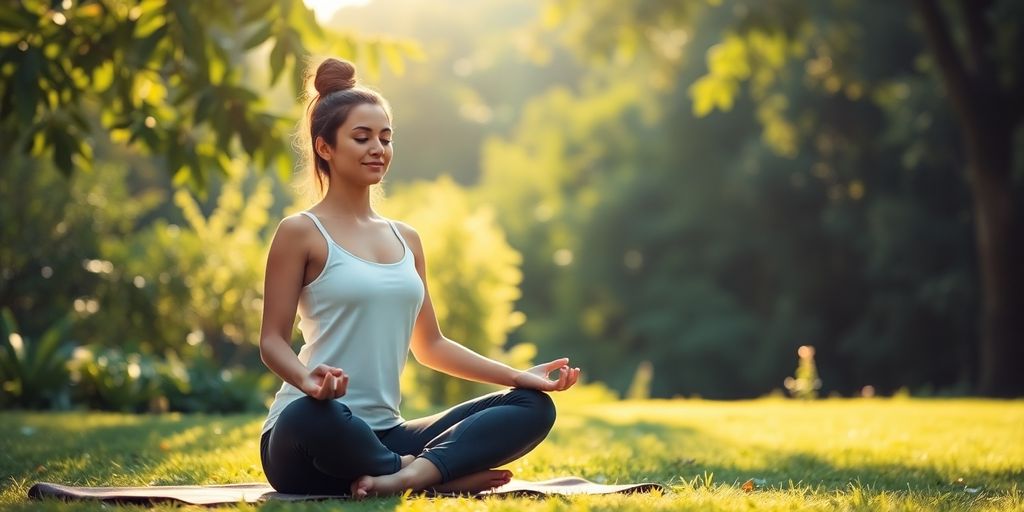
Transform Your Skills: Essential Teachers Training Yoga for Future Educators
In today's fast-paced world, the role of educators is evolving. Teachers are not just responsible for academic instruction; they also play a crucial part in fostering emotional and physical well-being in their students. This is where teachers training yoga comes in. It offers educators the chance to enhance their skills and create a more balanced environment in their classrooms. By integrating yoga into their teaching practices, future educators can promote wellness, mindfulness, and resilience among their students. Let's explore the key benefits and skills that come with this transformative training.
Key Takeaways
- Yoga training boosts physical health and well-being for teachers and students alike.
- Educators learn effective communication skills that enhance classroom interactions.
- Incorporating yoga promotes a calm and focused learning environment.
- Teachers gain tools to manage stress and build emotional resilience.
- Creating inclusive spaces through yoga fosters a sense of community in classrooms.
Benefits Of Teachers Training Yoga
So, you're thinking about yoga teacher training? Awesome! It's not just about perfecting your poses; it's a journey that can seriously boost your well-being. Let's break down some key benefits.
Physical Health Improvements
Yoga teacher training isn't just about learning to teach; it's about deepening your own practice. This means more flexibility, strength, and better posture. You'll be moving your body in ways you didn't think possible, and that's going to have a ripple effect on your overall physical health. Think of it as an investment in your long-term well-being. You'll probably find yourself sleeping better too!
Mental Clarity And Focus
Ever feel like your brain is a browser with too many tabs open? Yoga can help with that. Teacher training emphasizes mindfulness and meditation, which are like hitting the reset button for your mind. You'll learn techniques to quiet the mental chatter and improve your focus, not just on the mat, but in all areas of your life. It's like learning to meditate, but with a purpose.
Emotional Balance And Resilience
Life throws curveballs, right? Yoga teacher training can equip you with the tools to handle them with more grace. You'll explore the emotional side of yoga, learning how to regulate your emotions and build resilience in the face of stress. It's about finding that inner calm and carrying it with you, even when things get tough. Plus, you'll be better equipped to help your future students navigate their own emotional landscapes. You can also learn about mindfulness practices to help you stay grounded.
Yoga teacher training is more than just learning poses; it's about personal growth and transformation. It's a chance to connect with yourself on a deeper level and develop the skills to share that connection with others.
Essential Skills For Future Educators
Being a teacher is way more than just knowing your subject. It's about connecting with students, managing a classroom, and making sure everyone feels included. It's a tough job, but with the right skills, you can make a real difference.
Effective Communication Techniques
Communication is key. It's not just about talking; it's about listening, understanding, and responding in a way that resonates with your students. Think about it – how many times have you felt like a teacher just wasn't hearing you? We don't want that!
- Active Listening: Pay attention, show you care, and really hear what students are saying.
- Clear Instructions: Make sure your directions are easy to understand.
- Non-Verbal Cues: Be aware of your body language and how it affects your message.
Good communication isn't just about what you say, but how you say it. It's about creating a safe space where students feel comfortable sharing their thoughts and ideas.
Classroom Management Strategies
Classroom management is a big one. It's about creating an environment where learning can actually happen. It's not about being a dictator, but about setting clear expectations and creating a sense of community. It's about finding that balance between structure and flexibility.
- Establish clear rules and expectations from day one.
- Use positive reinforcement to encourage good behavior.
- Address disruptive behavior quickly and fairly.
Creating Inclusive Learning Environments
Every student is different, and it's our job to make sure everyone feels welcome and supported. That means understanding different learning styles, cultural backgrounds, and individual needs. It's about creating a space where everyone can thrive. Consider yoga teacher skills to help you with this.
- Recognize and celebrate diversity in the classroom.
- Adapt teaching methods to meet individual learning needs.
- Create a safe and supportive environment for all students.
| Strategy | Description |
Integrating Yoga Into Educational Settings
Mindfulness Practices In The Classroom
Okay, so picture this: a classroom where, instead of fidgeting and zoning out, kids are actually... present. That's the goal with mindfulness in schools. We're not talking about turning every class into a silent retreat, but rather weaving in short, simple exercises. Things like focusing on the breath for a minute before a test, or doing a quick body scan to release tension. The idea is to give students tools to manage stress and improve focus. It's about creating a calmer, more centered learning environment. I've seen teachers use guided meditations, even just for five minutes, and the difference in the classroom vibe is noticeable. It's not a magic bullet, but it's a start.
Promoting Student Well-Being
Let's be real, school can be tough. Pressure to perform, social drama, and just the general chaos of being a kid can take a toll. Yoga can be a way to help students cope. It's not just about physical poses; it's about teaching them how to connect with their bodies and manage their emotions. Think about incorporating simple stretches into the day, or teaching kids how to use breathing techniques to calm down when they're feeling overwhelmed. It's about giving them practical tools to manage stress and build resilience. It's not about turning them into yogis, but about giving them skills for life.
Enhancing Focus And Concentration
Ever tried to teach a room full of kids who are bouncing off the walls? It's not easy. Yoga can help with that. Certain poses and breathing exercises can actually improve focus and concentration. Things like balancing poses require attention and coordination, which can translate to better focus in other areas. And deep breathing helps calm the nervous system, making it easier to concentrate. It's not a quick fix, but with regular practice, it can make a real difference. Plus, it's a fun way to get kids moving and engaged. Consider a 300-hour yoga teacher training to learn more about these techniques.
Integrating yoga into schools isn't about replacing traditional education; it's about complementing it. It's about creating a more holistic learning environment where students can thrive, not just academically, but also emotionally and physically. It's about giving them the tools they need to navigate the challenges of life with greater ease and resilience. It's a long game, but it's worth it.
The Journey Of Becoming A Yoga Teacher

Understanding Yoga Philosophy
So, you're thinking about becoming a yoga teacher? Awesome! It's more than just knowing poses; it's about understanding the whole philosophy behind it. This involves studying the Yoga Sutras, the Bhagavad Gita, and other ancient texts. It's not just memorizing stuff, but really getting what yoga is all about – the connection between mind, body, and spirit. It's like learning the rules of a game before you start playing, except this game is about life, you know?
Developing Teaching Techniques
Okay, you know the philosophy, now how do you actually teach? It's not enough to just be good at yoga yourself; you need to be able to explain it to others. This means learning about different teaching styles, how to cue poses properly, and how to adjust students safely. Think about it like this:
- Verbal Cues: Clear and concise instructions.
- Demonstrations: Showing the poses correctly.
- Adjustments: Helping students deepen their practice (safely!).
- Modifications: Offering options for different levels.
It's a skill, and it takes practice. You'll probably feel awkward at first, but don't worry, everyone does. Just keep practicing, and you'll find your own voice as a teacher. You can also complete a training program from a Yoga Alliance registered school.
Building A Personal Practice
Here's the thing: you can't really teach something you don't practice yourself. Your personal practice is the foundation of your teaching. It's where you explore the poses, experience the benefits of yoga, and connect with your own body and mind. It doesn't have to be perfect, or even long, but it needs to be consistent.
Think of your personal practice as your laboratory. It's where you experiment, learn, and grow. It's also where you recharge your batteries so you can show up for your students with energy and enthusiasm.
It's a journey, not a destination. Enjoy the ride!
Advanced Training Opportunities
So, you've got your initial yoga teacher certification? Awesome! But the learning doesn't stop there. Think of it as leveling up in a video game. There's always a new skill to learn, a new area to explore, and new ways to deepen your understanding and teaching abilities. Let's look at some ways to keep growing.
Specialty Certifications
Want to focus on a specific area of yoga? That's where specialty certifications come in. These are like mini-courses that let you become an expert in something like prenatal yoga, kids yoga, restorative yoga, or even yoga for athletes. Each one requires extra training hours and usually a test or project to show you know your stuff. It's a great way to stand out and attract a specific type of student.
Continuing Education Workshops
Workshops are a fantastic way to learn new things without committing to a full certification. They're usually shorter, more focused, and can cover a wide range of topics. Think about things like advanced asana techniques, yoga philosophy, or even business skills for yoga teachers. Many studios and online platforms offer these, so there's always something new to check out. Plus, they often count towards continuing education credits, which you might need to maintain your certification.
Mentorship Programs
Sometimes, the best way to learn is from someone who's been there, done that. Mentorship programs pair you with an experienced teacher who can guide you, answer your questions, and offer advice. It's like having a yoga Yoda! They can help you refine your teaching style, deal with tricky student situations, and even navigate the business side of things. It's a really personal and supportive way to grow as a teacher.
Continuing your education as a yoga teacher isn't just about getting more letters after your name. It's about deepening your own practice, becoming a more effective teacher, and staying inspired. It keeps things fresh for you and your students, and it shows that you're committed to lifelong learning.
Creating A Supportive Community
Yoga teacher training isn't just about mastering poses; it's also about building connections. It's about finding your tribe, people who get what you're going through and can offer support and encouragement. Think of it as a team effort, where everyone is working towards a common goal: becoming the best yoga teacher they can be. It's a journey best traveled together.
Networking With Fellow Educators
One of the biggest perks of teacher training is the chance to meet other educators. These aren't just random people; they're individuals who share your passion for yoga and education. These connections can lead to collaborations, friendships, and a support system that extends far beyond the training itself. You can learn so much from each other, share ideas, and even team up on future projects. It's like having a built-in network of like-minded professionals.
Sharing Resources And Best Practices
Imagine having a treasure trove of teaching tips, lesson plans, and helpful articles right at your fingertips. That's what happens when you start sharing resources with your fellow trainees. Everyone has different strengths and experiences, so pooling your knowledge can benefit everyone involved. It's a win-win situation where you get to learn from others and contribute your own expertise. Think of it as a collaborative learning environment where everyone is constantly growing and improving. My Vinyasa Practice offers rich educational resources to support your online yoga teacher training.
Collaborative Teaching Approaches
Why teach alone when you can teach together? Collaborative teaching is all about teaming up with other instructors to create a more dynamic and engaging learning experience for your students. This could involve co-teaching a class, leading workshops together, or even just bouncing ideas off each other. The benefits are huge: you get to learn from each other's strengths, share the workload, and create a more diverse and interesting class for your students. It's a great way to build community and enhance your teaching skills. Building mindful ambassadors is a great way to impact the lives of students.
Being part of a yoga teacher training program means having a community of like-minded individuals who share the same love for wellness and yoga. You’ll get support and friendship from your fellow instructors and experienced trainees.
Here's a quick look at the benefits of collaborative teaching:
- Shared workload
- Diverse perspectives
- Enhanced creativity
Transformative Impact Of Yoga On Education

Fostering Emotional Intelligence
Yoga in education isn't just about poses; it's a powerful tool for building emotional intelligence. Kids learn to recognize and manage their feelings through mindful movement and breathing exercises. It's like giving them a secret weapon to deal with stress and tough situations. I've seen firsthand how even a few minutes of yoga can change the whole vibe of a classroom, making it calmer and more focused. It's pretty cool to watch.
Encouraging Lifelong Learning
Yoga teaches kids to be curious about their bodies and minds. It's not about being perfect; it's about exploring and learning. This mindset can spill over into other areas of their lives, making them more open to new ideas and experiences. Yoga encourages a growth mindset, where challenges are seen as opportunities to learn and improve.
Building Resilience In Students
Life throws curveballs, and kids need to be able to bounce back. Yoga helps them develop resilience by teaching them how to cope with stress and discomfort. It's like building a mental and emotional shield. When things get tough, they have the tools to stay grounded and keep going. It's not about avoiding challenges, but about facing them with strength and grace. The benefits of our yoga teacher trainings are numerous.
Yoga provides a space for students to connect with themselves, promoting balance and harmony. It reminds us that profound transformations often occur when we look inward, drawing upon the ancient wisdom of yoga.
Wrapping It Up: Your Journey Begins Here
So, there you have it. If you're thinking about becoming a yoga teacher, it's a big step, but it can be so rewarding. This training isn't just about learning poses or teaching styles. It's about connecting with yourself and others in a meaningful way. You'll gain skills that go beyond the mat, helping you grow personally and professionally. Plus, you'll be part of a community that values wellness and mindfulness. So, why wait? Dive into this journey and see how it transforms not just your teaching, but your life too.
Frequently Asked Questions
What are the main benefits of yoga teacher training?
Yoga teacher training can help improve your physical health, boost your mental focus, and help you manage your emotions better.
What skills will I learn in yoga teacher training?
You will learn how to communicate effectively, manage a classroom, and create a welcoming environment for all students.
How can I use yoga in my classroom?
You can introduce mindfulness exercises, promote student wellness, and help students stay focused and attentive.
What is involved in becoming a yoga teacher?
To become a yoga teacher, you will study yoga philosophy, learn teaching methods, and develop your own yoga practice.
Are there advanced training options available?
Yes, you can pursue specialty certifications, attend workshops for further education, and find mentorship programs.
How can I connect with other educators in yoga?
You can network with fellow teachers, share helpful resources, and work together on teaching strategies.


